Introduction
I bought this 1961 Hermes Baby with serial 5875948 in Switzerland in February 2019. It became number 58 in my collection. This was my first “Baby”, and it was technically my fifth Hermes. 1

The Hermes Baby was introduced in 1935 and it was manufactured all the way to the 1970s in various iterations. To say that it was a successful engineering design is an understatement.
This early 1960s version matches in style the famed “curvy” Hermes 3000 that so many typewriter enthusiasts now fight for: smooth Hermes green paint, green keys, and fairly curvy too, although Hermes introduced that body shape in the 1940s already. In 1963 the body would become more angular again, and the 1966 “boxy” revision of the Hermes 3000 would also share the more angular design.
This machine features a Swiss-French keyboard. Note the dieresis (tréma) and circumflex dead key, as well as dedicated “é”, “è” / “ù”, “ê”, and “à” keys. There is also a “ç” on top of the number 3 key. This keyboard can be used for French, but also for German.
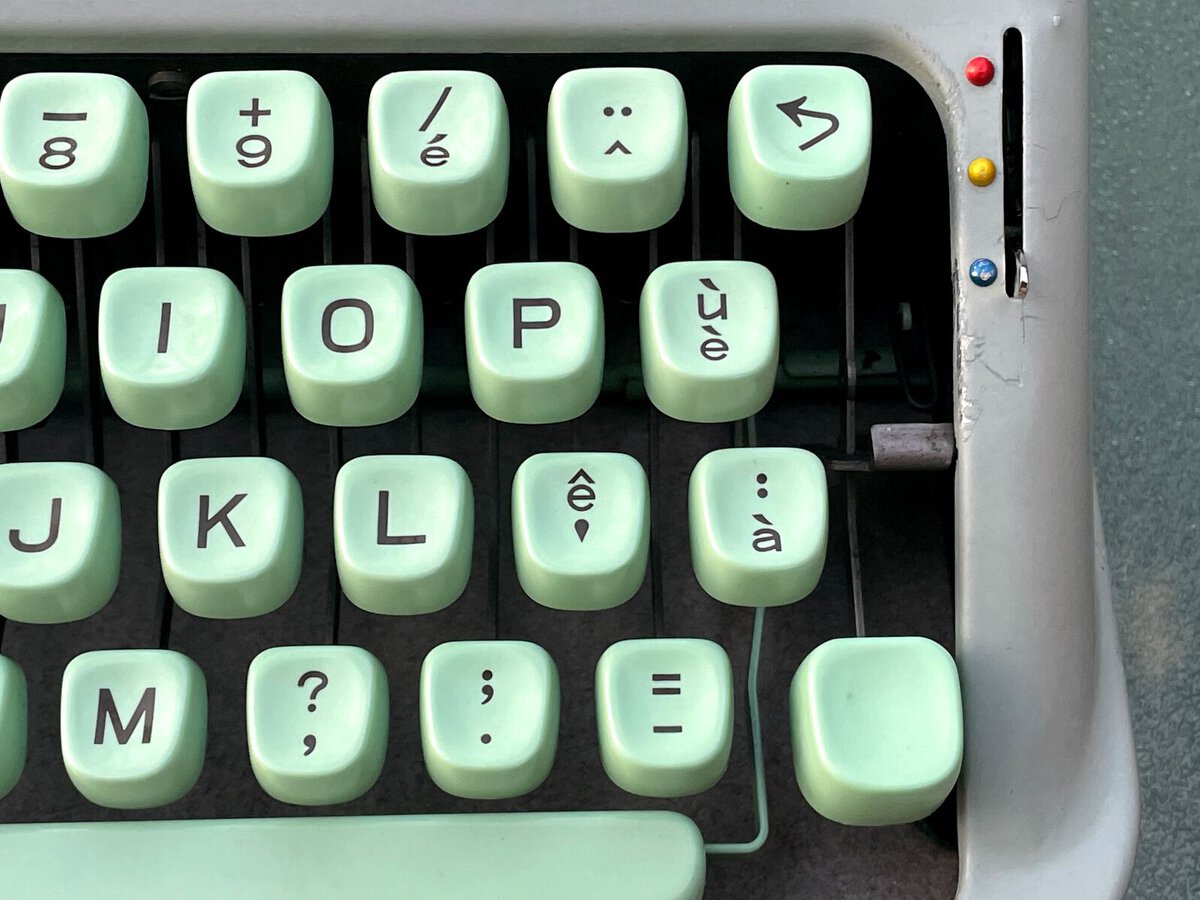
Within the right wing, there is a vendor tag from “Office Moderne - Mme E. Olivier et M. Rudaz SION”:
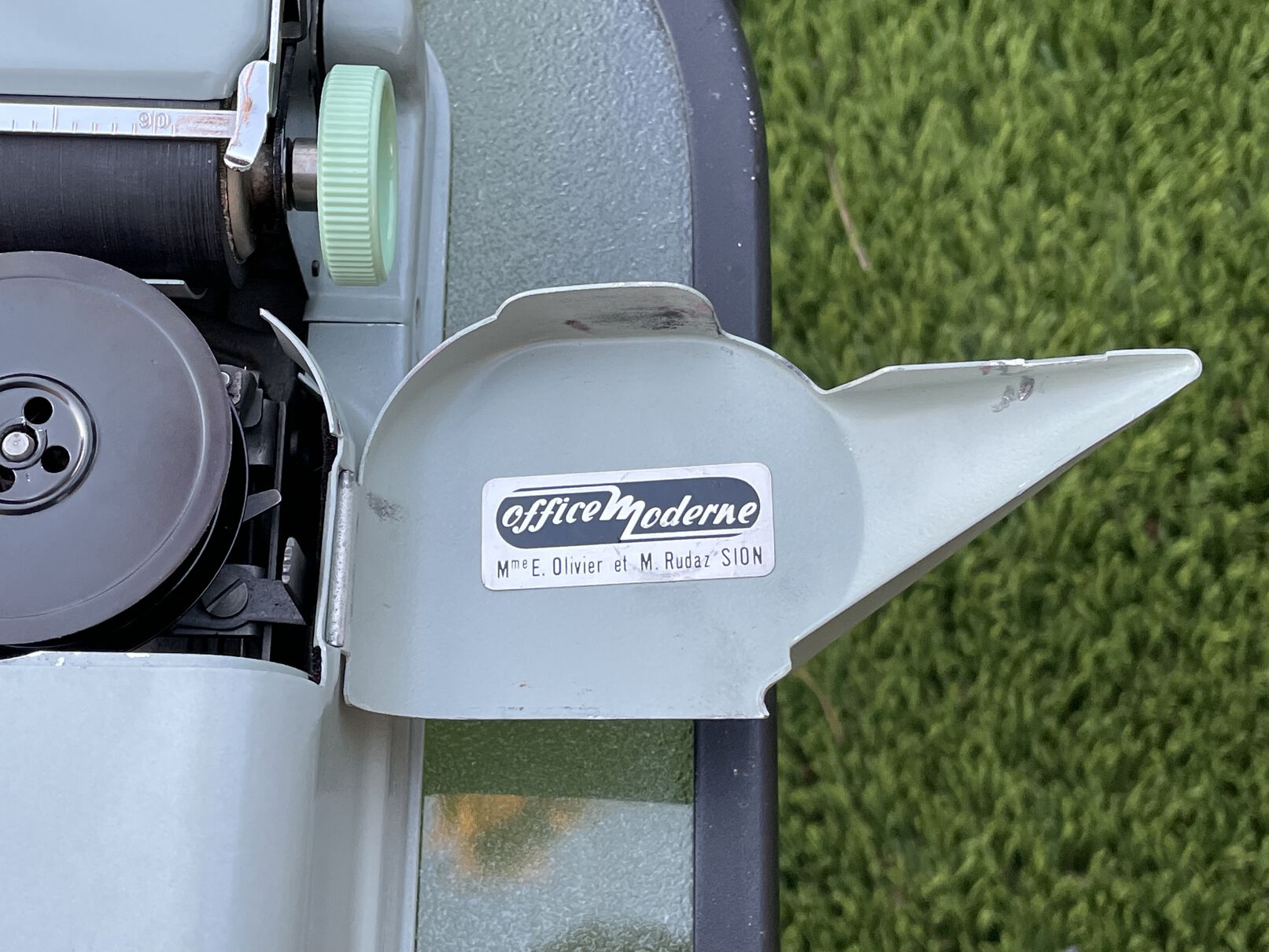
I used the machine in the summers of 2019 and 2021 in Switzerland.

I enjoyed using the machine, even without any cleaning or adjustments. I don’t have much experience with so-called ultraportable typewriters, but I have tried a Skyriter rebrand, the Tower Chieftain III, as well as an Olivetti Lettera 22 rebrand, the Sears Diplomat, and those are much less solid than the Baby. I might have to try more ultraportables to know for sure, but so far the Baby is my favorite. 2
The huge benefit of ultraportables is, of course, their small size and weight. For example this Baby weighs just over 8 lb (about 3.7 kg) including the case. Compare:
| Machine | Without Case (lb) | Without Case (kg) | With Case (lb) | With Case (kg) |
|---|---|---|---|---|
| Tower Chieftain III (Skyriter) | 7.6 lb | 3.4 kg | 9.7 lb | 4.4 kg |
| Hermes Baby 1961 | 8.1 lb | 3.7 kg | 8.2 lb | 3.7 kg |
| Sears Diplomat (Lettera 22) | 8.4 lb | 3.8 kg | 11.0 lb | 5.0 kg |
| Hermes 3000 1967 | 14.0 lb | 6.3 kg | 16.8 lb | 7.6 kg |
| Hermes Ambassador 3 | 25.0 lb | 11.3 kg | N/A | N/A |
| Olympia SG1 | 38.0 lb | 17.2 kg | N/A | N/A |
Cleaning the machine
I only recently took the machine with me to California alongside another Hermes Baby from 1951. This machine mostly needed cleaning and a few small fixes. I removed the body panels, as I always do when possible. The machine just sits on the bottom plate and simply comes out of it once the panels are removed.
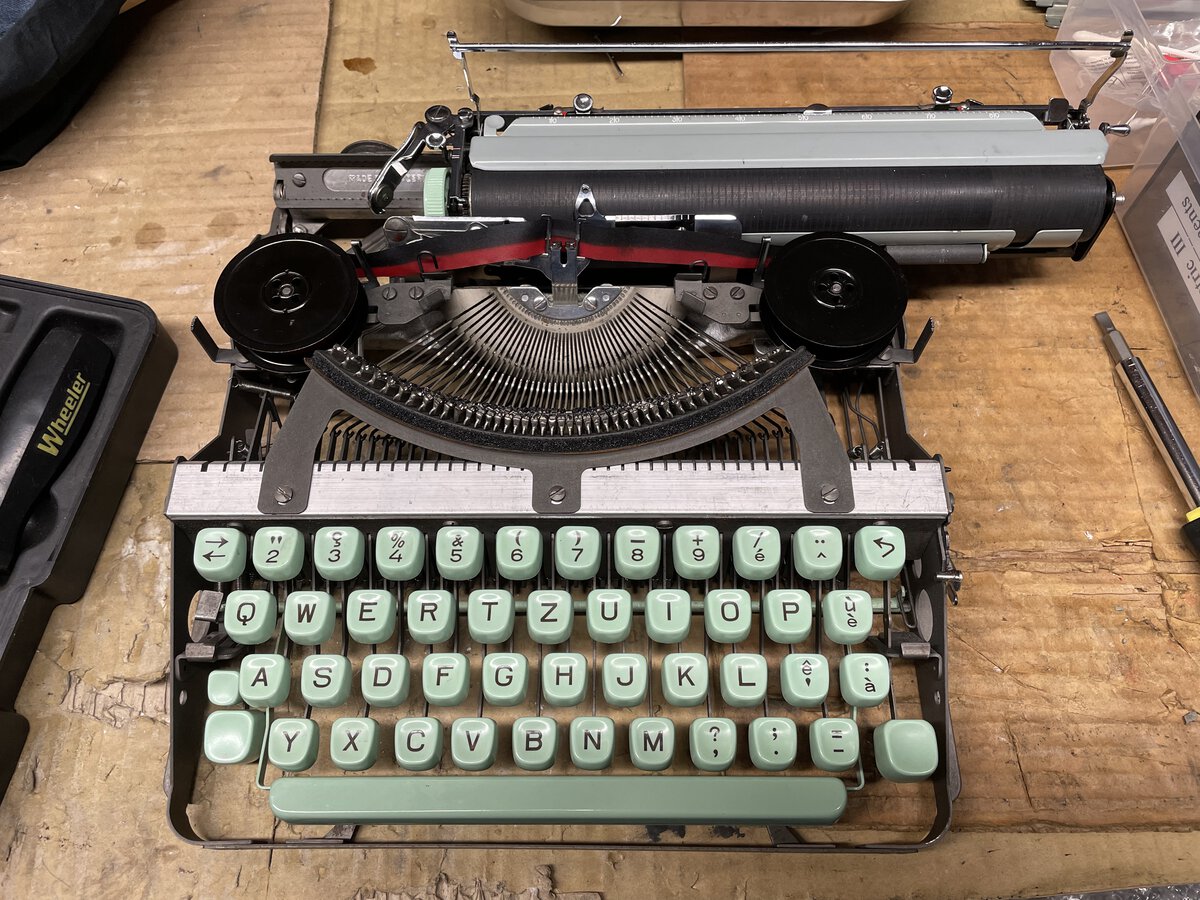
I vacuumed and blew (air compressor) the soundproofing felt, but didn’t feel it absolutely required replacing. That might still happen at a later time. Then I went through what is now the usual process:
- removing all the body panels
- using the air compressor to blow out dust and eraser shavings
- cleaning the inside and segment with mineral spirits
- cleaning the body and panels with Simple Green
- lightly polishing all the smooth body panels
- cleaning the platen
- cleaning and lightly polishing the platen knobs
- cleaning the keyboard
- lightly waxing the body panels for a little extra shine and protection
Two of the tiny feet were missing, and the other two were crumbling.
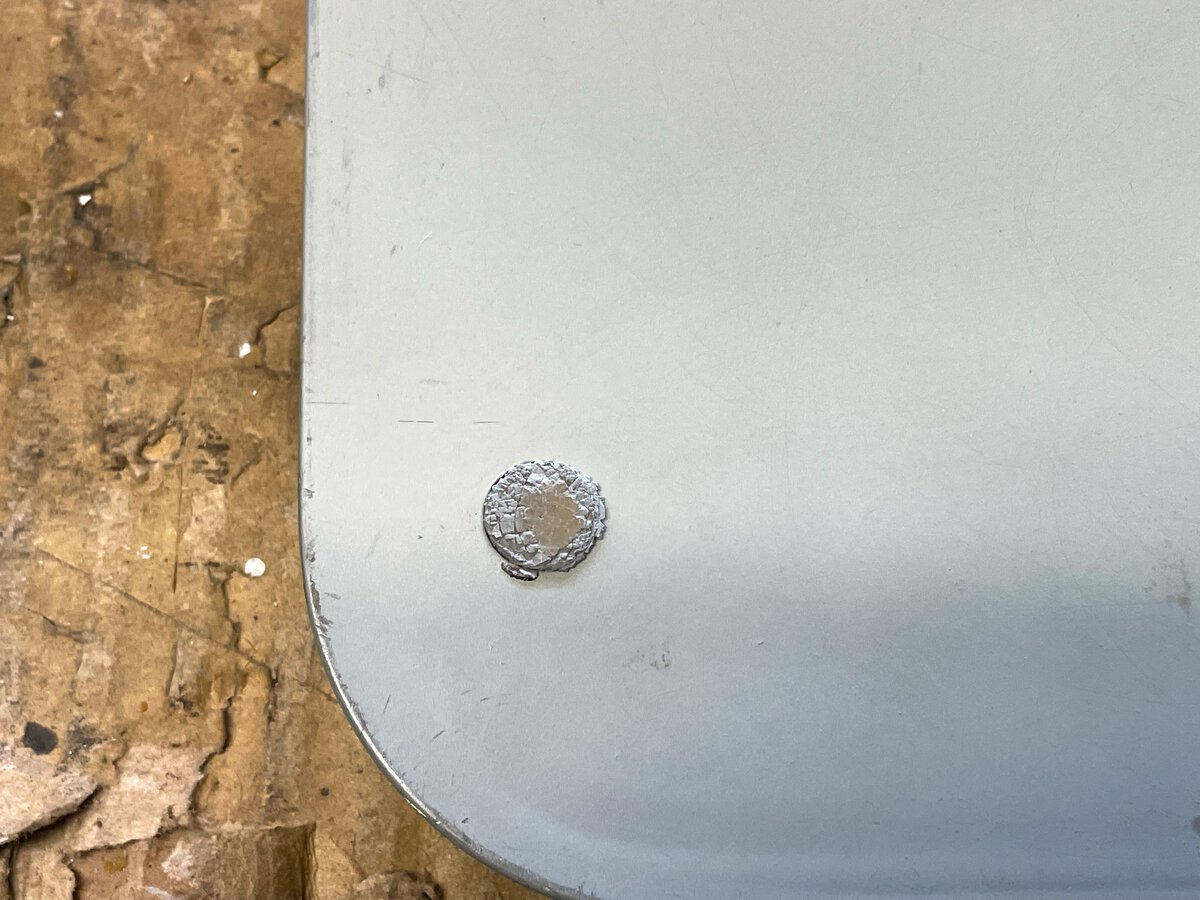
I replaced them with black rubber washers. Another color might be better, but again that’s not too bad and easy to change. I first hesitated regarding the orientation but decided to have the concave side of these washers pointing away from the machine’s bottom.

Cleaning the case
The case needed special attention. It was originally very grimy.
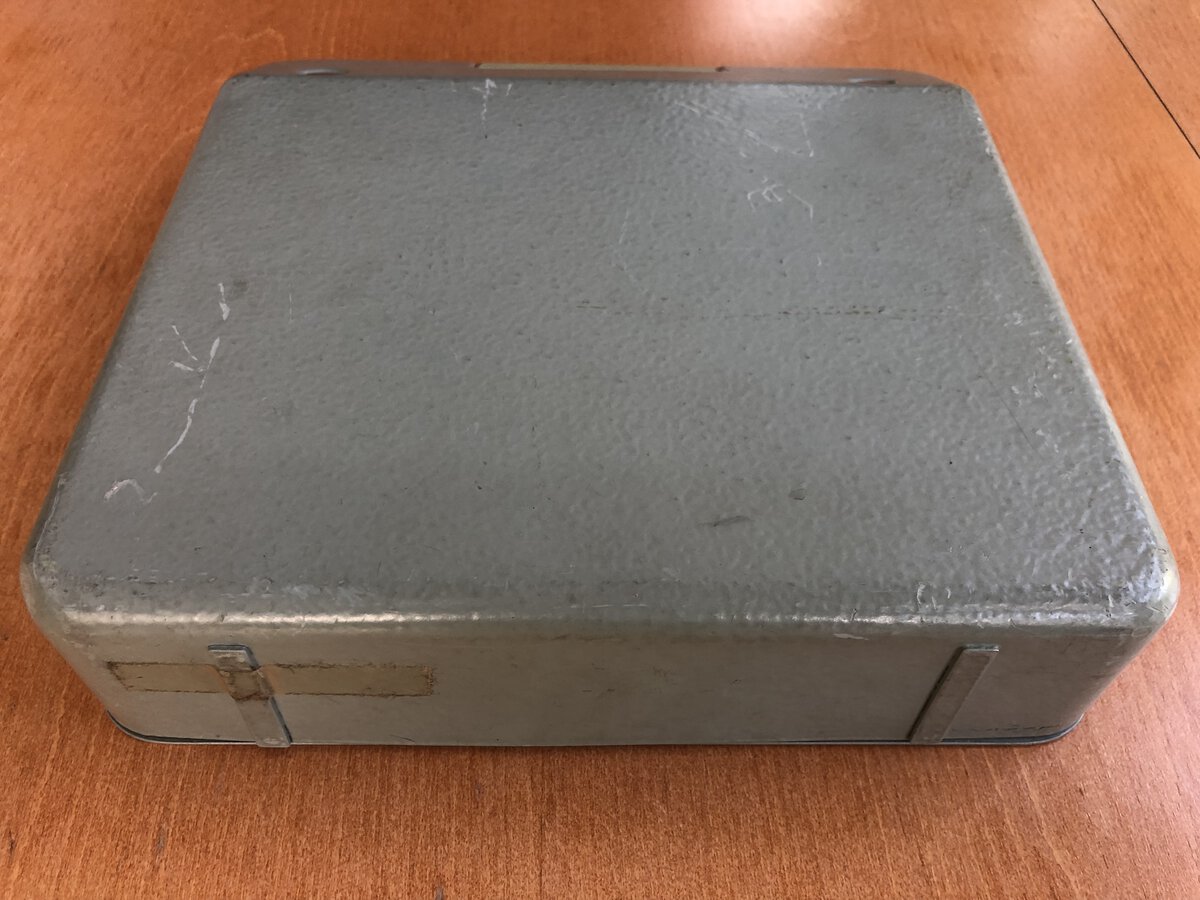
However, at some point - I really don’t know when - it also got a bunch of blue ink stains.

Luckily almost all of this went away with:
- Simple Green
- Hoppe’s #9 (this took care of the ink stains)
- Meguiar’s Ultimate Compound
I used Meguiar’s on the top of the case as well as the bottom. This helped mostly with the bottom of the case, where the slightly abrasive compound removed more grime (and probably a tiny layer of paint).
Finally, I used Renaissance wax on the case and bottom for protection and a subtle shine.

The case still has scratches and scuffs, but it is clean and I am happy with the result!
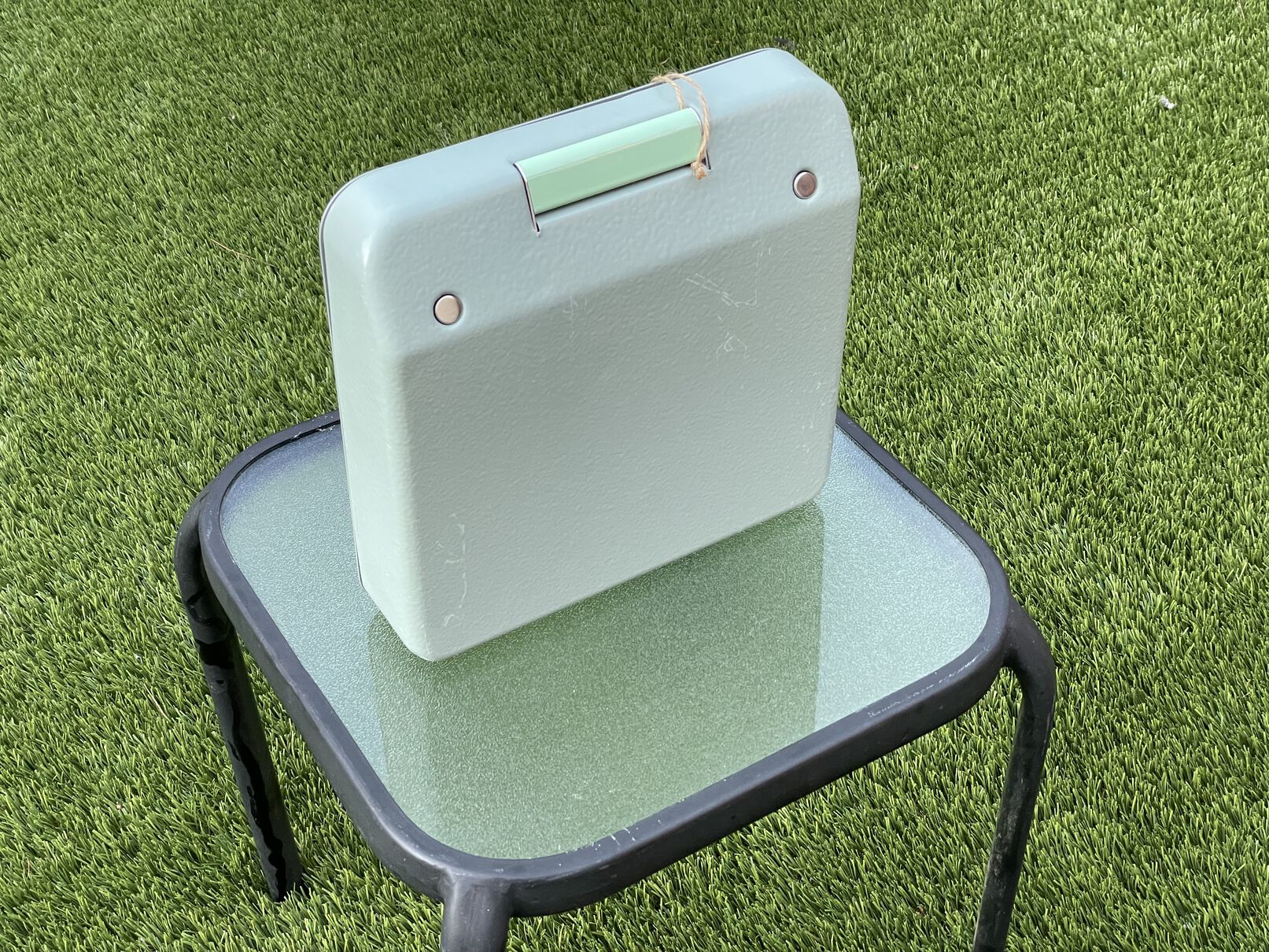
Fixes
Besides cleaning, the machine needed a few small fixes.
First, it was missing its right-hand platen knob. I was lucky enough to be able to buy a NOS knob (one of his last) from Jacques Perrier (Mr. Hermes in Switzerland). It’s now installed and the machine looks complete!

Second, during travel, I had put bubble wrap around each of the two Hermes Babies I was carrying, just in case.

I had the two machines in a plastic bag. I put the bag on a chair at some point and everything fell on the ground. This Baby’s handle took a hit: it got pushed out a little and deformed the guide inside the case. I used a plastic punch to shape that back, as well as a little dent on the case where the handle had deformed the case a little.
Third, there was not enough tension on the ribbon spool when the ribbon was winding on the right side. The left spool was essentially free, which means the ribbon would be loose and smudge the page.
I tried to bend a little the flat spring that pushes on the wheel underneath the spool. This seems to have helped a little but is probably not enough. But I also didn’t want to break that spring. When the ribbon winds towards the left, I am not getting any smudges. This typeface sample was obtained that way.

Fourth, the right-hand wing cover was not latching the right way. I pushed forward the little loop that pushes the ribbon away from the wing on the right. Then the wing wouldn’t latch at all. I formed it a little so it would latch, and I repositioned the two small plates that allow adjusting the wings latches relative to the front of the case. This is now a little better.
Fifth, the back panel was bent around the screw that holds it in the middle.
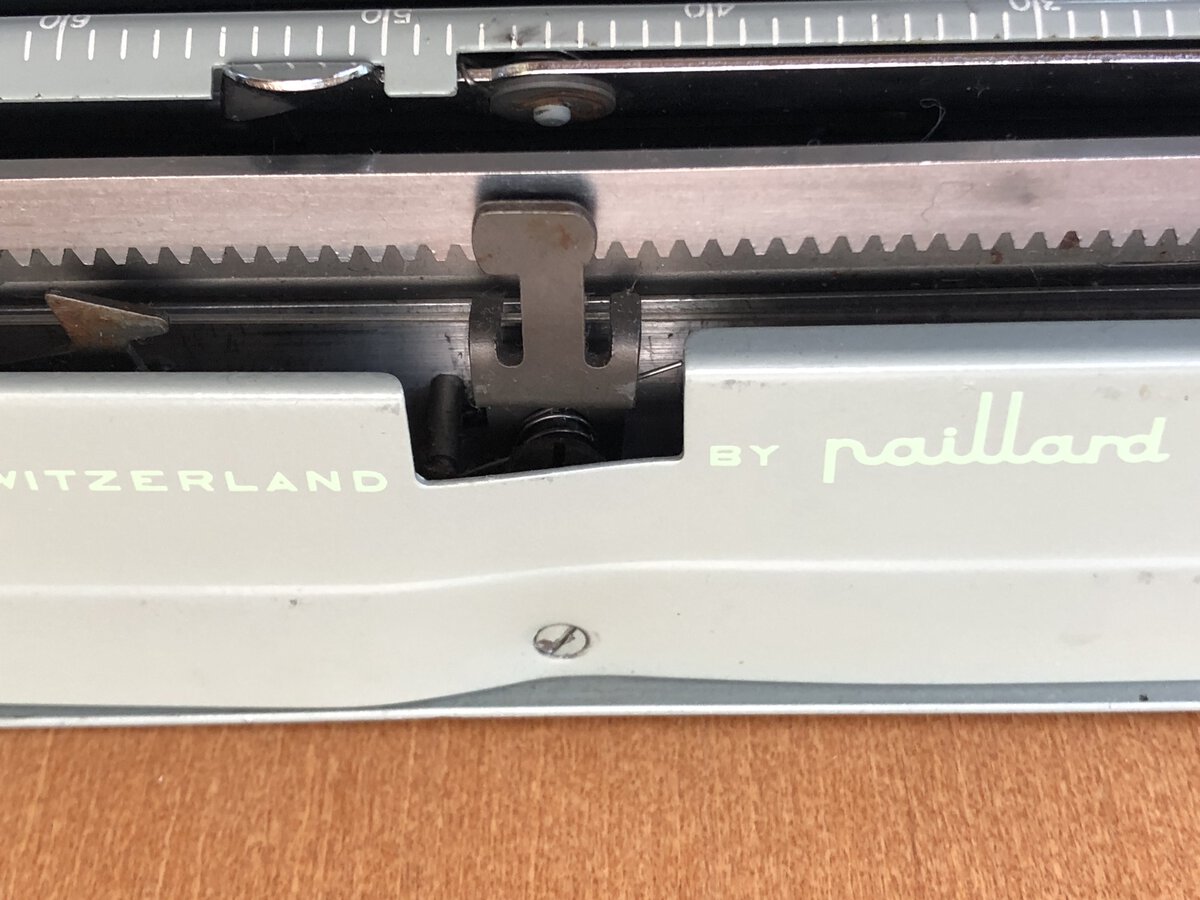
The body panels are fairly thin and it was no problem straightening that part a little.

Conclusion
I am really happy with this Hermes Baby. It is now clean and very pretty. I don’t think I will use it that much to type with at home, because there are superior options (including the Hermes 3000). But I will contemplate taking it with me when I leave the house.
More
- TWDB entry
- Photos before cleaning
- Photos during cleaning
- Photos after cleaning
- More photos after cleaning
“Technically” because I hadn’t really been able to work on, or even try any of them except my Hermes 3000, number 38, bought the previous summer, and which I really like. ↩
Still, let’s face it: this is way inferior to an Hermes 3000, or a Royal QDL, or probably most regular-size portables - not even talking about standard (desktop) machines. ↩
The Ambassador is actually really light for such a huge machine due to its aluminium frame. ↩

Comments powered by Disqus.